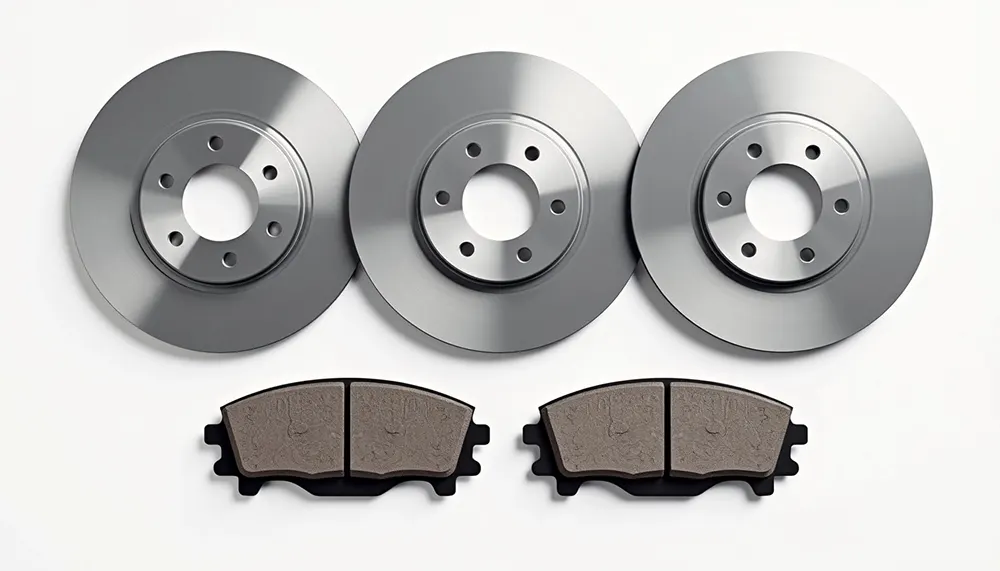If you’re a conscientious car owner, you know you need to replace your brake pads every so often. But what about your brake rotors? Brake rotors don’t have a simple wear indicator like brake pads, so knowing when to replace them can be tricky. There isn’t a single, straightforward answer to how often you should replace brake rotors, but by understanding the signs and key factors, you can make a more informed decision about your vehicle’s safety.
The Simple Answer: It Depends
On average, most brake rotors last between 30,000 and 70,000 miles. However, this is just a general guideline. Your vehicle’s brake rotors could last for as long as 100,000 miles or as little as 15,000 miles, depending on several key factors.
Factors That Affect Rotor Lifespan
- Driving Habits: Your personal driving style is the biggest factor. Aggressive drivers who brake hard and frequently will wear down their rotors much faster than a gentle driver who anticipates stops.
- Vehicle Type: Heavier vehicles, such as trucks and SUVs, put more stress on the braking system. Consequently, their rotors tend to wear faster than those on a lighter sedan or compact car.
- Brake Pad Material: The type of brake pads you use can impact rotor life. Harder pads, like some semi-metallic formulations, can wear down rotors more quickly than softer, ceramic pads.
- Environment and Climate: Driving in an area with a lot of road salt, humidity, or corrosive materials can cause rotors to rust and degrade faster.
The Clear Signs It’s Time for New Rotors
Don’t just rely on mileage; pay attention to what your car is telling you. Here are the most common signs that your rotors need to be replaced.
- Vibration or Pulsing: If you feel a pulsing or vibration in your brake pedal or steering wheel when you brake, it is often a sign of uneven wear on the rotors. This is commonly referred to as a “warped rotor,” but it’s more likely caused by uneven material deposits from the brake pads.
- Visible Damage: You can often see clear signs of wear by looking at the rotor through your wheel’s spokes. Look for deep grooves, scoring, or visible cracks.
- Squealing or Grinding Noises: A persistent squeal or a loud grinding noise is a sign that the brake pad material is completely gone. In this case, the metal backing plate of the pad is grinding directly against the rotor. This is extremely dangerous and a sign of severe rotor damage.
The Final Word: The “Discard Specification”
Every brake rotor has a manufacturer-specified minimum thickness, also known as the “discard specification.” This is the definitive safety limit. When a mechanic services your brakes, they use a precision tool called a micrometer to measure the rotor’s thickness. If the rotor’s thickness is at or below this limit, it must be replaced, regardless of its visual appearance.
Conclusion: Don’t Guess, Get It Checked
Ultimately, the best way to know if your brake rotors need to be replaced is to have a qualified mechanic perform a professional inspection. They can check for the telltale signs of damage and, most importantly, measure your rotors against the manufacturer’s specifications. Therefore, never guess. Paying attention to your car’s symptoms and getting a professional opinion are the smartest ways to ensure your vehicle’s safety.



